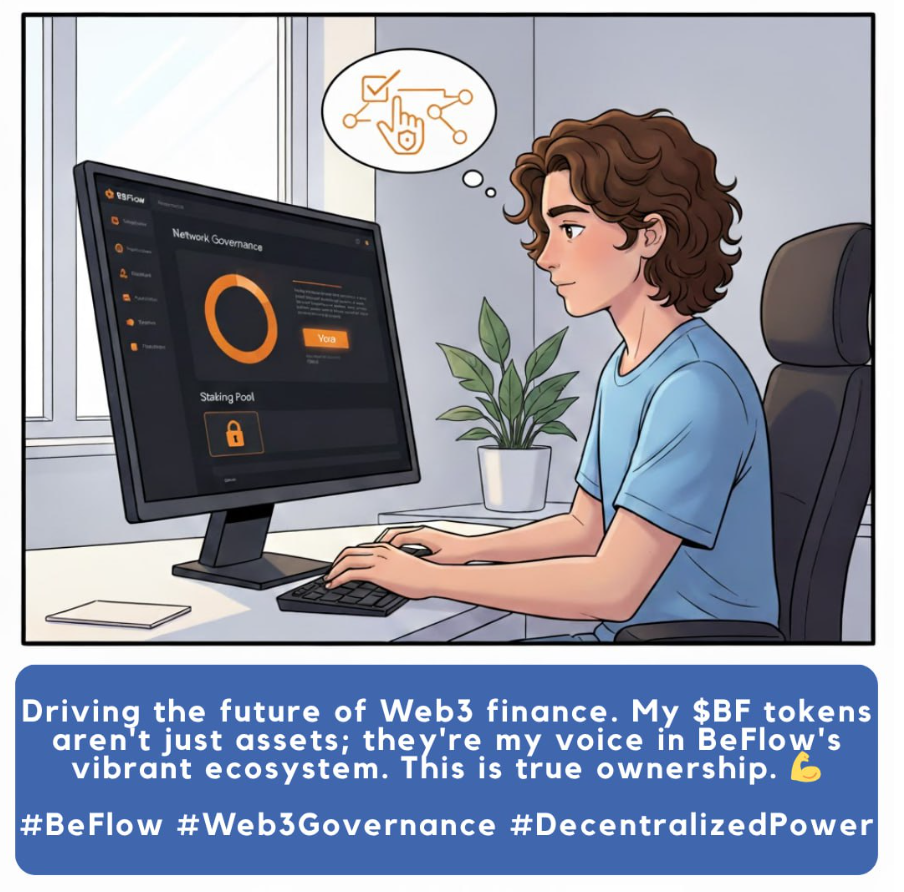On October 10, multiple outlets called it “the most severe flash crash in modern crypto history.”
According to in-depth analysis, the average drop reached 63%, and perpetual futures open interest collapsed by nearly 50%.
This was not merely a price meltdown — it was a concentrated exposure of liquidity fragility, leverage excess, and structural vulnerabilities in the market.
For BeFlow, however, such a storm isn’t just a market event — it’s a real-world stress test and an opportunity to validate and strengthen its “Consumption as Equity” structural design.
I. Structural Fault Lines Behind the Crash: Liquidity Vanished, Leverage Amplified, and Systemic Fragility
The flash crash revealed at least three key issues across the trading landscape:
1. Rapid Liquidity Drain
Data showed that open interest in several major assets dropped by 20–30% within hours, with some contracts losing over 80% of their value — meaning fewer than one in five positions survived.
Triggered liquidations, cascading ADL (auto-deleveraging), and forced unwind mechanisms effectively “vaporized” liquidity, leaving markets unable to absorb pressure.
2. High-Leverage Systems Amplified Systemic Risk
The steep decline in open interest on leading platforms reflected both forced liquidations of overleveraged accounts and the inability of liquidity layers to absorb large market orders.
In short, leverage acted as an amplifier — converting volatility into a free fall within minutes.
3. Fragile Market Structures and Passive Mechanisms
During the crash, round-trip costs (combined buy-and-sell transaction costs) for some assets briefly surged above 5%, far higher than normal.
This revealed how, under stress, market-making, quoting, and cross-exchange arbitrage systems can all freeze or malfunction simultaneously.
These breakdowns remind every project seeking to build a “tokenized ecosystem” or “payment-to-asset loop” that sustainable mechanisms, stable structures, and real-world scenarios matter more than price charts.
II. BeFlow’s Perspective: Why the “Consumption Entry” Is More Resilient Than the “Speculation Exit”

Many projects thrive at bull-market peaks — focusing on token issuance, community hype, and speculative price growth.
But when systemic risks strike, models relying solely on liquidity and speculation often collapse.
BeFlow, by contrast, is structurally positioned to remain resilient through volatility, due to several built-in advantages:
1. “Payment = Computing Power” Anchors Behavior to Real Value
In BeFlow, each real-world transaction — regardless of market direction — converts into computing power, which releases BEE tokens and builds on-chain credit.
This means user activity generates real value pathways, not mere speculative anticipation. Even amid market turmoil, this behavioral anchor enhances system stability.
2. Diverse Real-World Scenarios Reduce Single-Token Dependency
Unlike trading-focused projects, BeFlow is rooted in merchant payments, live-commerce, and consumption scenarios — the on-chain gateway to daily life.
In high-volatility markets, everyday consumption remains steady: people still eat, shop, and travel; merchants still operate.
By linking these actions to on-chain value, BeFlow sustains ecosystem continuity even when markets shake.
3. Sustainable Token Release Mechanism — Avoiding the “Pump-then-Dump” Trap
Many projects unlock massive token supplies at market highs, creating sell pressure and collapse.
BeFlow’s design emphasizes phased release, consumption-linked computing power, and long-term credit accumulation, providing greater anti-shock resilience.
Even during downturns, user entitlements continue releasing gradually, not vanishing overnight.
III. After the Storm: New Opportunities from a Consumer-Finance Perspective
As the market matures, regulation strengthens, and participants grow more rational, “Consumption as Asset” and “Payment as Equity” are gaining strategic importance.
Three emerging opportunity zones are taking shape:
A. Layered Liquidity: Payment Networks as Secondary Growth Channels
When trading platforms and leveraged derivatives falter, payment ecosystems can become capital and user safe havens.
BeFlow’s real-spending-driven payment model acts as a stable entry point, easier for mainstream users to understand and adopt.
B. User Credit Systems as Foundational Infrastructure
Speculative token models rely on price expectations — when those collapse, user confidence evaporates.
BeFlow’s Computing Power + Token Release + Credit Loop creates an enduring store of participation value.
Even with price volatility, user credit persists as a value channel.
C. Merchant Stickiness and Ecosystem Lock-In
During turbulence, merchants favor sustainable models that improve retention and lower acquisition costs.
BeFlow’s approach — where merchant rewards generate computing power and user repurchases yield long-term value — offers a more durable growth cycle than one-time subsidies or ad incentives.
As merchant ecosystems solidify, volatility resistance naturally improves.
IV. Remaining Challenges and Execution Strategies
Despite its structural advantages, BeFlow must still navigate key implementation challenges:
• User Education & Behavioral Transition: Shifting from traditional spending to “spending as computing release” requires understanding and trust. Early-stage onboarding and guided experiences are essential.
• Scenario Depth & Merchant Integration: Mechanism design alone isn’t enough; users need real contexts. Expanding merchant coverage, payment gateways, and cross-chain support remains core.
• Regulatory & Compliance Alignment: The flash crash exposed how fragile unregulated systems can be. BeFlow should maintain active dialogue with legal, tax, and industry bodies.
• Sustainable Tokenomics: In volatile conditions, release schedules, incentive models, and circulation mechanisms must withstand pressure — supported by strategic reserves and adaptive design.
Conclusion: The Storm Exposed the Fragile — and Cleared the Path for the Durable
The October 10 crash reminded us that no matter how advanced the tech or elegant the token model, without solid mechanisms and real scenarios, systems fail under stress.
Many projects that seemed unstoppable in bull runs were undone by volatility.
BeFlow’s path is different: it anchors value in real consumer behavior, powered by a triad of Computing + Token + Credit, and grounded in an ecosystem connecting users, merchants, and scenarios.
It may not be the fastest in a bull market — but it could prove the most resilient in a storm.
And when the market clears, the projects that endure will be those built on mechanism, participation, and reality — not speculation.
If you’re not just waiting for the next bull run, but want to help build the next generation of consumer-finance infrastructure,
BeFlow may be the path worth watching.


All Comments